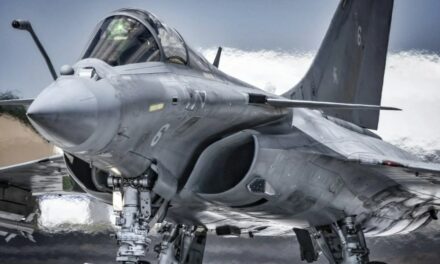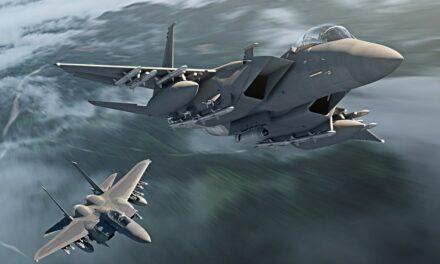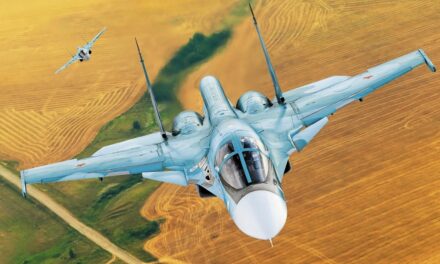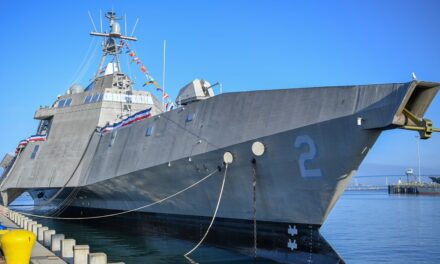We support our Publishers and Content Creators. You can view this story on their website by CLICKING HERE.
Key Points: The U.S. Navy’s F/A-XX program, a sixth-generation fighter initiative to replace the aging F/A-18E/F Super Hornet, is progressing steadily.
-Unlike the U.S. Air Force’s paused NGAD program, the Navy is confident in its vision for a jet with advanced sensors, lethality, range, and integration with drones under the Collaborative Combat Aircraft (CCA) concept.
-While CNO Admiral Lisa Franchetti supports the program, budgetary constraints and Secretary of Defense Lloyd Austin’s focus on submarines could pose challenges.
-The F/A-XX’s long range is essential for addressing the Indo-Pacific anti-ship missile threat, ensuring the carrier fleet’s relevance in future warfare.
What’s the Future of the U.S. Navy’s F/A-XX Program?
We have been discussing the U.S. Air Force’s sixth-generation fighter program – the NGAD – extensively at 19FortyFivel. We figured you would need an update on how the U.S. Navy is also re-imagining next-generation naval aviation for the 2030s and beyond.
Meet the F/A-XX, the Navy’s version of the NGAD.
The Navy is more confident than the Air Force about its sixth-generation jet. Let’s take a closer look at this experimental program looking to soar to new heights.
Prime Contractor Nearly Chosen
The good news is that the Navy is close to picking a prime contractor for the F/A-XX. Three defense firms are reportedly in the running.
Meanwhile, the NGAD is on “pause” as the Air Force tries to pinpoint its design and reduce costs.
NGAD: Original artwork courtesy of Rodrigo Avella. Follow him on Instagram for more incredible aviation renders.
It’s All About Drone Teaming
Like the NGAD, the Navy wants the F/A-XX to be tethered to combat and reconnaissance drones for the Loyal Wingman concept or what is now called by the U.S. military the Collaborative Combat Aircraft (CCA).
The CCA could fly out before the F/A-XX and fire hypersonic weapons at enemy ground targets or collect intelligence, surveillance, and reconnaissance data. This would include electronic warfare and cyber capabilities to blind enemy air defenses.
Plus, the CCA could focus on targeting and bomb damage assessment. The F/A-XX and the CCA would be highly stealthy, with long-range and optimum carrier operations at a high operational tempo.
The F/A-XX also needs to be pilot-friendly despite all the newfangled systems it will have – likely the maximum use of artificial intelligence and the most updatable software and hardware systems.
Chief of Naval Operations Supports F/A-XX
We have written glowing reviews on the leadership ability of Chief of Naval Operations (CNO) Admiral Lisa Franchetti.
She devised a naval strategy called Project 33, which was designed to defeat the Chinese navy on the high seas. Franchetti is a F/A-XX fan, and this CNO has an early prognostication for the program.
The Navy’s sixth-generation fighter will have “advanced sensors, advanced lethality, advanced range, and being able to integrate with manned and unmanned capabilities together,” according to Franchetti quoted in Air and Space Forces Magazine.
SECDEF Is Not So Sure
Having the CNO on board is a promising development for the F/A-XX program. However, Secretary of Defense Lloyd Austin could be more confident.
Austin believes the expensive Virginia-class submarine will require cuts to the F/A-XX that would run upwards of $400 million. That’s bad news.
New DOD Leadership Is Probably On the Way
However, cutting experimental airplanes’ research and development budget is nothing new and should not be seen as the death knell for F/A-XX. It has been a successful program so far, but the F/A-18 E/F Super Hornet’s “sting” is not as sharp as it used to be. The Navy needs a sixth-generation jet to protect the fleet and conduct complicated missions in contested environments. Besides, a new administration means a new set of possible choices on F/A-XX and its fate.
F/A-XX Must Have Long Range Like F-14
One other dilemma for the F/A-XX is the need for a long-range solution.
The Navy has a problem in East Asia with anti-ship missiles from China, creating an environment that requires American vessels to remain out of range of the weapons.
If the F/A-XX can fly longer than the Super Hornet, that bodes well for the future of the aircraft carrier itself, an important aspect for the future of Naval warfare in the Indo-Pacific. The F-14, for example, could fly massive distances and should be a source of inspiration.
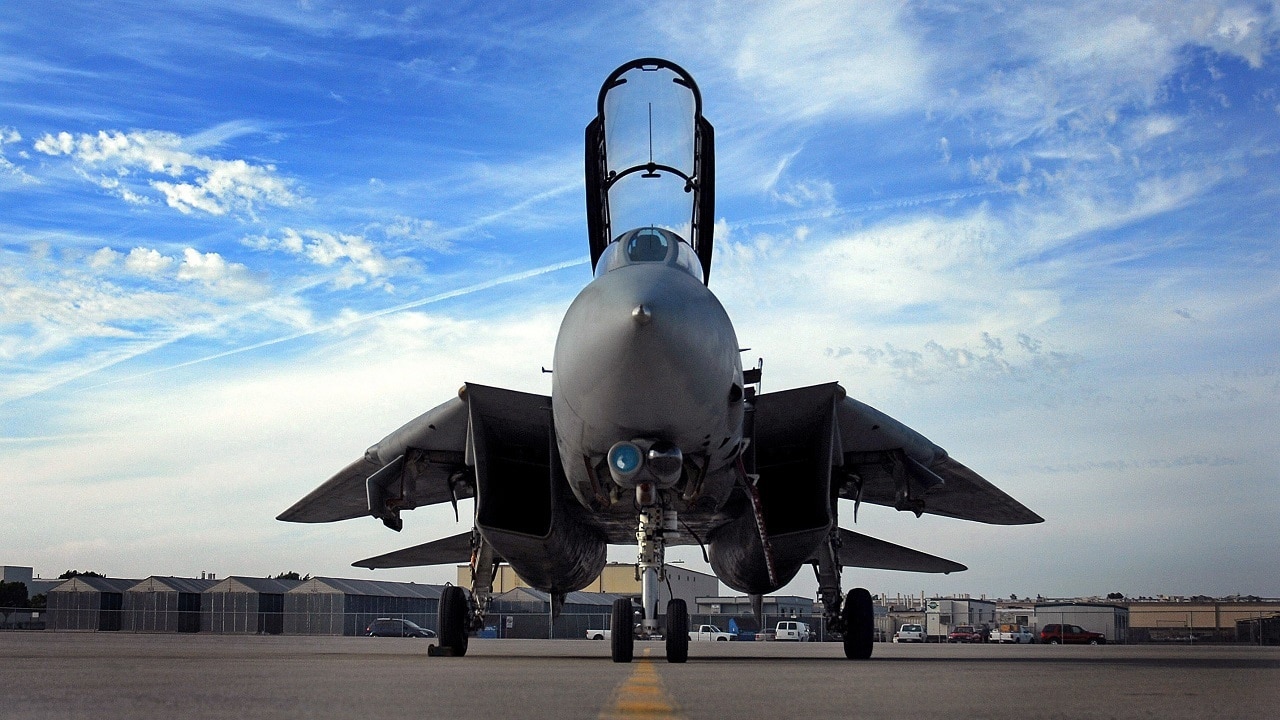
A U.S. Navy F-14D Tomcat aircraft from Fighter Squadron 31, sits on the flight line after completing its final flight at Naval Base North Island, San Diego, Calif., on Sept. 29, 2006. After 36 years of service, the Tomcat is being replaced by the F/A-18E/F Super Hornet aircraft.
The Path Forward
I see the Air Force’s NGAD pausing at a red light and the Navy’s F/A-XX program advancing slowly under a flashing yellow caution light. The F/A-XX is needed, but the program may have to pinch pennies as it chooses a prime contractor and begins to chart out future funding.
About the Author: Dr. Brent M. Eastwood
Brent M. Eastwood, PhD, is the author of Don’t Turn Your Back On the World: a Conservative Foreign Policy and Humans, Machines, and Data: Future Trends in Warfare, plus two other books. Brent was the founder and CEO of a tech firm that predicted world events using artificial intelligence. He served as a legislative fellow for U.S. Senator Tim Scott and advised the senator on defense and foreign policy issues. He has taught at American University, George Washington University, and George Mason University. Brent is a former U.S. Army Infantry officer. He can be followed on X @BMEastwood.

 Conservative
Conservative  Search
Search Trending
Trending Current News
Current News 